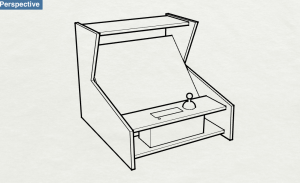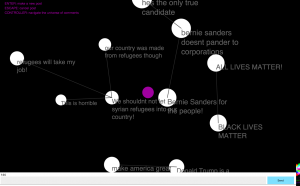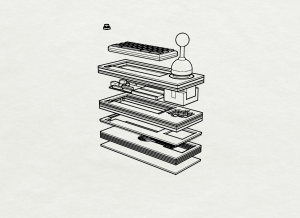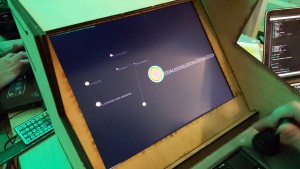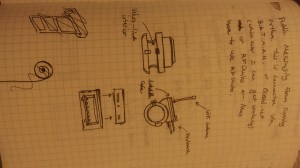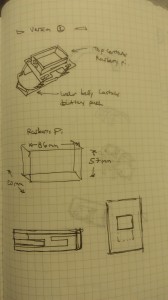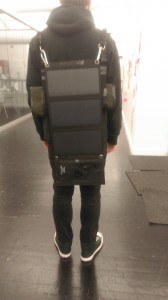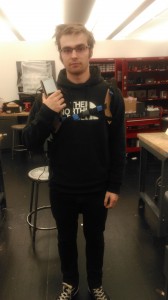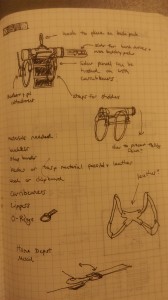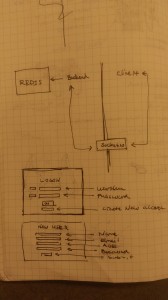Github link: https://github.com/deevolutionism/IoT_Final_2015
Final Presentation Video:
Quick demo of the project:
Concept:
Mediating the constraints of the assignment (enclosed controller + up/down/left/right + P5.js) with my concept (to create an ephemeral social media platform, I decided to make my social media platform somewhat resemble neural networks. This metaphor is suiting because neural networks grow and fade over time as new connections are created and old ones decay. This organic structure reflects the ephemeral behavior I want to be present in my platform.
Research:
John Oliver’s “Dick Pick Program” to help spread awareness about online privacy. Putting privacy in the average man’s terms so that people can more easily understand what type of activities the NSA is capable of. Why should you care about NSA spying? Because they can see your dick pics. Thats an embarrassing breech of privacy right there.
The american public’s perception of privacy. A whole bunch of great of information about what people know and think about privacy: http://www.pewinternet.org/2014/11/12/public-privacy-perceptions/
Another pew interent research poll about the “social media spiral of silence” http://www.pewinternet.org/2014/08/26/social-media-and-the-spiral-of-silence/
Ephemeral Net: http://techcrunch.com/2013/06/30/the-ephemeralnet/
Process: Explained in the video.
Problems: Explained in the video.
Future Iterations/Direction: Improve visual design of the project. Brand the project, create a logo, make some sort of visual identity that can be pasted on the sides of the game cabinet.

